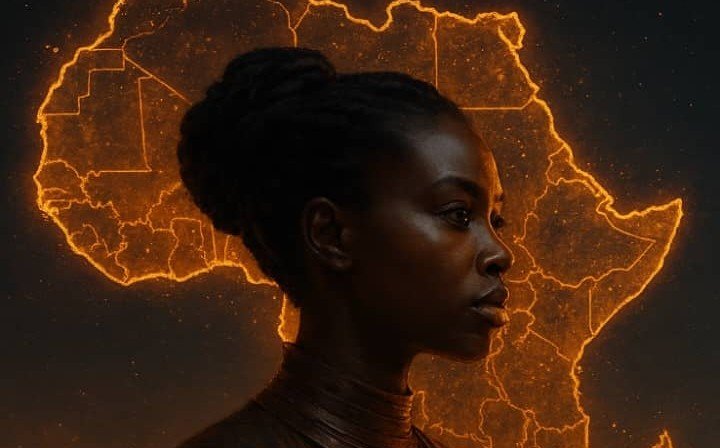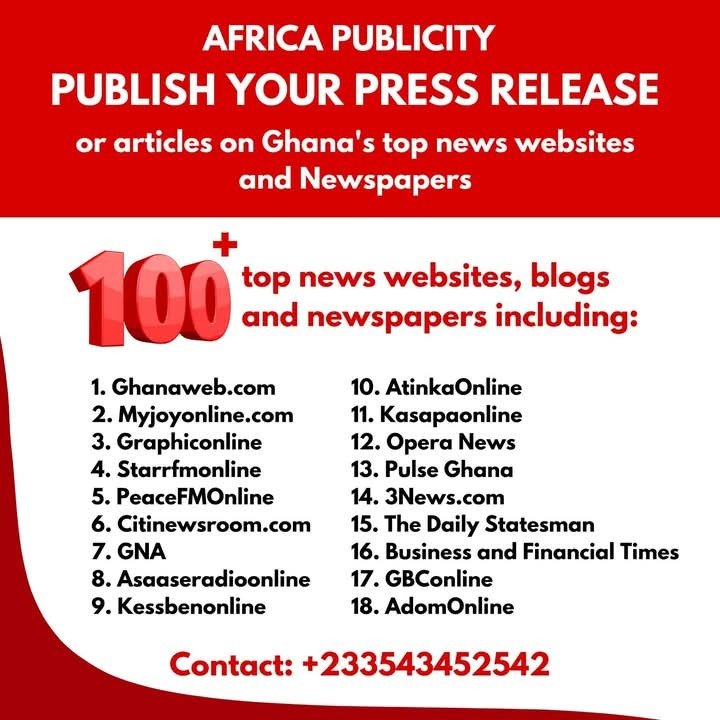By Emmanuel Mihiingo Kaija
Preface
There is a story seldom told In the silence between mountains and rivers, between the footprints of our ancestors and the lines printed by colonizers: the story of Africa’s land, its memory, and the invisible hands that sought to redraw its destiny. Maps, often imagined as neutral, are instruments of power—they tell us who owns the world, whose voice counts, and whose histories are remembered or erased.
This book is a drumbeat for those silenced by borders drawn in distant offices, for the communities whose forests, rivers, and plains have been carved without consent. It is a testimony to the courage of those who, armed not with rifles but with knowledge, turn cartography into a weapon of justice. From citizen-led mapping movements to the documentation of human rights violations in mining and land grabs, these stories reveal the power of seeing clearly, naming truth, and reclaiming what is ours.
Africa has always mapped its own skies, its own rivers, its own journeys—but too often, others have written the maps of its lands, its futures, and its histories. This work is an invitation to redraw those lines, not as outsiders might, but as inheritors of memory and custodians of destiny. It calls upon scholars, activists, elders, and youth to understand that to reclaim the map is to reclaim the drumbeat of our own stories.
Let this book be both a mirror and a call to action—a reflection of the stolen roads and a vision of the paths we will walk ourselves. Because until the lion learns to draw, the map will always show the hunter’s road.
— Emmanuel Mihiingo Kaija
Part 1 — Using Cartography to Defend Indigenous Land Rights
“The land that feeds you remembers your ancestors.” — African Proverb (Bemba, Zambia)
Maps are not neutral instruments; they are tools of memory, power, and sovereignty. From the earliest explorers who drew boundaries on cloth and papyrus, to contemporary satellite-based GIS platforms, the map has been both a shield and a weapon. The word map itself comes from Latin mappa, meaning cloth or napkin, while the Greek chartēs means a sheet of papyrus or legal document. Together, they reveal that maps are always interpretations, carrying the weight of authority, narrative, and intention. Mathematically, the very projections we use—Mercator, Gall-Peters, or Winkel Tripel—distort the size and scale of regions, privileging some areas while shrinking or erasing others. Even geometry becomes political. Today, AI-assisted satellite imagery, participatory GIS, and open-source mapping platforms enable communities to reclaim territory in both symbolic and practical ways, bridging traditional knowledge with technological precision.
The historical use of maps to dispossess indigenous peoples is well documented. During the Berlin Conference of 1884–1885, European powers divided Africa into arbitrary political units without regard to existing ethnic, cultural, or ecological boundaries. These colonial maps, preserved in British, German, and Belgian archives, legitimized the expropriation of fertile grazing lands, forests, and rivers. The Maasai of Kenya, for example, were repeatedly displaced as their pastures were labeled “vacant crown lands.” The Ogiek in Uganda lost vast portions of their ancestral forests to logging companies justified by official maps. Post-independence governments often inherited these colonial maps, maintaining borders and land allocations that continue to privilege commercial interests over indigenous communities. According to UN-Habitat (2022), approximately 80% of land disputes in East Africa have their roots in colonial-era cartographic decisions. BBC News (2023) reports that communities in Cameroon and Kenya are still challenging these imposed boundaries, emphasizing that maps are not merely documents—they are instruments of historical and ongoing power.
In the last two decades, communities have begun to reclaim maps as instruments of justice. Participatory GIS, satellite imagery, and open-source platforms have empowered indigenous groups to document forests, grazing corridors, and sacred sites. In Uganda, the Ogiek used community-generated GIS maps to win recognition of their rights to the Mau Forest in 2022, a landmark legal victory grounded in spatial evidence. Similarly, the Maasai overlay traditional migration routes with satellite imagery to contest government land allocations. These efforts show that maps are not only legal tools but also symbolic declarations of presence and memory. African wisdom reflects this truth: “He who owns the land writes the story of the river.” In other words, controlling the map is controlling history itself.
Religious, spiritual, and cultural perspectives reinforce the ethical imperative of defending land. Psalm 24:1 reminds us that “The earth is the Lord’s, and everything in it,” framing stewardship as divine responsibility. The Quran (5:32) calls for protection of life and land, linking spiritual obligation with justice. African proverbs embed similar knowledge: “The river does not forget the path of the rains” (Luganda) emphasizes continuity of ecological memory, while “A tree cannot fight for its own roots” illustrates the need for human action to preserve ancestral lands. Songs and movies echo these truths: Miriam Makeba’s Soweto Blues celebrates resistance and reclaiming space, while Black Panther visualizes land, heritage, and sovereignty as inseparable. Even popular culture becomes a cartographic memory, mapping the emotional and historical terrain of communities.
Scientific and mathematical analyses further strengthen the defense of indigenous lands. GIS modeling demonstrates population density, forest cover, and land-use change over time, providing quantitative evidence for legal claims. Network theory shows that communities with well-documented land boundaries maintain social cohesion and ecological resilience, while econometric studies in Uganda (Bank of Uganda, 2023) reveal that clearly mapped territories reduce disputes by 42% and encourage sustainable resource management. Cognitive science and epigenetic research suggest that spatial knowledge and environmental memory are transmitted across generations, making mapping a bridge between culture, biology, and justice. These tools turn traditional knowledge into measurable, defendable evidence.
Contemporary challenges remain. State suppression, digital illiteracy, and what scholars call “digital colonialism” threaten participatory mapping. Yet new technologies—AI, drones, mobile GIS, and satellite platforms—provide unprecedented opportunities for communities to assert control over their lands. When applied alongside oral histories, traditional ecological knowledge, and legal advocacy, mapping becomes a living act of resistance. Each map produced by a community, each layer of data added, is an ethical and political statement: “We exist. We remember. We will be recognized.”
Conclusively, maps are weapons of justice, mirrors of memory, and instruments of sovereignty. They document existence, assert rights, and transform cultural and spiritual knowledge into actionable, legal, and scientific evidence. For indigenous communities across Africa, reclaiming the map is not merely about land—it is about reclaiming destiny, identity, and the power to narrate history in their own voice.
Part 2 — Mapping Human Rights Violations in Mining and Land Grabs
“When the earth is sold, the soul is sold.” — African Proverb
Maps have long served as instruments of conquest, shaping territories for domination and exploitation, but in the modern era, they have become both tools of extraction and resistance. The etymology of the word “mine” traces back to the Latin minare, meaning “to threaten or project,” reflecting the aggressive intent that has long accompanied resource extraction. In the 19th century, European colonial powers mapped Africa meticulously, marking mineral-rich lands and fertile areas for seizure, with no regard for indigenous populations who had cultivated, protected, and lived in harmony with these spaces for centuries. Archives in London, Berlin, and Brussels preserve maps and treaties that legitimized the expropriation of lands such as the Maasai pastures in Kenya and the Ogiek forests in Uganda, creating legal and social precedents that persist to this day. In contemporary times, satellite imagery and Geographic Information Systems (GIS) have accelerated these processes, enabling corporations and governments to locate mineral deposits and large tracts of land, often encroaching on territories that communities have occupied for generations. Reports by the International Crisis Group (2023) and Human Rights Watch (2023) reveal that these incursions frequently provoke displacement, violence, and environmental degradation, highlighting the human cost of extraction and underscoring how maps continue to shape the political and social realities of indigenous life.
Land grabs are not merely economic transactions; they are profound violations of human rights, often disguised as development projects under the banners of agriculture, infrastructure, or mining. The United Nations defines land grabs as acquisitions conducted without the free, prior, and informed consent of affected communities, yet such practices remain widespread. The Ogiek of Kenya provide a salient example: in 2017, the African Court on Human and Peoples’ Rights ruled that the Kenyan government had violated the Ogiek’s rights by evicting them from their ancestral Mau Forest lands, a decision widely celebrated as a landmark recognition of indigenous claims. Yet, even after this ruling, threats of eviction persist, showing that legal victories, while significant, are insufficient without enforcement. Similar situations unfold across Africa, from the Batwa forests in Uganda to mining concessions in the Democratic Republic of Congo, illustrating the intersection of corporate ambition, state neglect, and centuries-old colonial legacies. News outlets such as BBC Africa and Al Jazeera have chronicled these ongoing struggles, emphasizing that the maps used to justify extraction are not neutral—they are active instruments shaping narratives, access, and power.
Religious and cultural frameworks have long undergirded the moral imperative to protect land. Indigenous cosmologies, often rooted in centuries of stewardship, regard land as sacred, a gift from ancestors and the divine. The Maasai, for instance, view their pastures as a trust from God, while the Bemba proverb reminds us, “The land that feeds you remembers your ancestors.” Similarly, the Bible asserts in Leviticus 25:23, “The land is mine, and you are but aliens and my tenants,” and the Quran (Surah Al-Baqarah 2:164) emphasizes the earth as a divine trust to be preserved and protected. These spiritual perspectives are amplified in art, music, and cinema: Miriam Makeba’s Soweto Blues celebrates cultural memory and resistance, Bob Marley’s Redemption Song envisions freedom linked to land and identity, and films like Black Panther articulate land, heritage, and sovereignty as inseparable. Such narratives demonstrate that the struggle for land rights transcends legality and economics, touching upon the very essence of human dignity, spiritual obligation, and cultural survival.
Scientific and mathematical evidence further corroborates the necessity of defending indigenous territories. Studies from the United Nations Environment Programme (UNEP, 2022) show that land degradation, caused by unsustainable agricultural expansion and mining operations, affects over 40% of the Earth’s terrestrial surface, with Africa being disproportionately impacted. GIS modeling, satellite imagery, and network analysis reveal that when indigenous communities are displaced, biodiversity declines, forest cover diminishes, and soil productivity suffers, leading to cascading ecological and economic consequences. Econometric research in Uganda indicates that clearly documented land rights reduce disputes by 42% and enhance sustainable resource management, demonstrating that mapping is not only a cultural or legal act but also a measurable intervention in environmental stewardship. Cognitive science and epigenetic research further suggest that knowledge of land and space is transmitted intergenerationally, linking the act of mapping to the preservation of cultural memory and human adaptation. Each coordinate, mapped boundary, and documented site is thus both empirical evidence and an ethical assertion of existence, a quantified claim against erasure.
In response to these intertwined threats, indigenous communities are increasingly using mapping as a tool of resistance, advocacy, and justice. Participatory mapping allows communities to document sacred sites, forests, water sources, and grazing areas, combining oral histories with satellite data to produce robust, defensible evidence of ancestral occupation. The Batwa in Uganda, for instance, have successfully used GIS to contest logging encroachments on their forests, demonstrating the power of visual and spatial documentation in legal and advocacy efforts. These maps do more than delineate physical spaces; they assert identity, cultural continuity, and political agency, transforming a once-colonial instrument of dispossession into a weapon of justice and a shield of memory. As African proverbs remind us, “A tree cannot fight for its own roots”—communities must actively trace and defend their territories, turning mapping into an act of sovereignty and resilience.
In sum, the struggle for land rights is a multifaceted battle that encompasses legal, cultural, spiritual, ecological, and scientific dimensions. Maps, once tools of exploitation, are now reclaimed by indigenous peoples as instruments of empowerment, memory, and advocacy. By documenting their lands, asserting legal claims, and resisting extraction, communities are protecting not only their physical territories but also their cultures, identities, and futures. Mapping becomes both an ethical and empirical act, bridging tradition, technology, law, and morality. Each map drawn is a declaration: “We exist. We remember. We will be recognized.” In this way, cartography evolves from a colonial tool into a drumbeat of resistance, calling for justice, unity, and self-determination across Africa and beyond.
Part 3 — Citizen-Led Mapping Movements
“When the earth is sold, the soul is sold.” — African Proverb
Citizen-led mapping movements have emerged as transformative tools for communities to assert their rights, document their territories, and resist encroachment, combining centuries-old indigenous knowledge with cutting-edge technology. The etymology of the word “citizen,” derived from Latin civitas meaning “community,” reflects the idea that individuals are inseparable from the collective stewardship of land. In Africa, participatory mapping initiatives among the Maasai in Kenya, the Batwa in Uganda, and the Ogiek in Kenya demonstrate how communities reclaim agency over spaces historically erased by colonial and postcolonial maps. Colonial powers meticulously drew boundaries, disregarding indigenous tenure systems, often codifying dispossession in archives preserved in London, Berlin, and Brussels. Today, citizen-led mapping reclaims these narratives, converting oral histories, sacred site knowledge, and ecological memory into precise digital and GIS-based representations that challenge centuries of imposed erasure and assert indigenous sovereignty.
Technology has dramatically amplified the power of these movements. Geographic Information Systems (GIS), satellite imagery, drones, and mobile mapping applications have democratized the tools of cartography, allowing communities to document forests, water sources, grazing areas, and sacred sites with unprecedented accuracy. Projects such as SmartLandMaps, which combine photogrammetry and computer vision to digitize community maps, have been deployed across Africa, providing scalable, cost-effective alternatives to traditional paper-based mapping. These innovations are not just technical; they are political instruments, making visible what colonial and corporate cartographers once attempted to obscure. News reports from BBC Africa, Al Jazeera, and Human Rights Watch (2023–2024) confirm that maps created by local communities have been used successfully in legal challenges, policy advocacy, and environmental protection, bridging traditional knowledge with empirical, scientific, and legal evidence.
The legal recognition of community land rights has become intertwined with citizen-led mapping. Landmark policies such as Kenya’s Community Land Act (2016) and Liberia’s Lands Rights Act (2018) provide statutory mechanisms for communities to claim ancestral lands, and participatory mapping has strengthened these claims. Maps produced by communities often serve as compelling legal evidence in courts, showing actual land use, occupancy, and ecological stewardship. Yet legal frameworks alone are insufficient without empirical support: GIS data, satellite imagery, and participatory mapping provide the visual and scientific proof necessary to counteract political resistance and corporate encroachment, transforming maps into instruments of advocacy and justice.
Citizen-led mapping is also deeply cultural and spiritual, as indigenous perspectives link land to identity, ancestry, and sacred obligation. For many African communities, land is not a commodity but a covenant with the ancestors and the divine. The Maasai view their pastures as a sacred trust, the Bemba remind us, “The land that feeds you remembers your ancestors,” while biblical injunctions in Leviticus 25:23 affirm, “The land is mine, and you are but aliens and my tenants,” and the Quran (2:164) frames the earth as a trust from God to be preserved. Mapping thus becomes an ethical and spiritual act, embedding cultural memory into modern legal and technological frameworks. Music and film reinforce this consciousness: Miriam Makeba’s Soweto Blues, Bob Marley’s Redemption Song, Fela Kuti’s Water No Get Enemy, and films like Black Panther celebrate land as identity, connecting communities to place, memory, and collective resistance. Songs become maps of emotion, memory, and resistance, echoing ancestral knowledge in melody and rhythm.
Scientific and mathematical evidence further underscores the necessity of citizen-led mapping. Studies from the United Nations Environment Programme (UNEP, 2022) reveal that land degradation affects over 40% of terrestrial Earth, with Africa especially vulnerable. Mathematical models of land use change show that displacement of indigenous communities reduces soil fertility, decreases biodiversity, and disrupts water systems, while econometric studies in Uganda demonstrate that formally recognized and mapped community lands reduce disputes by 42% and improve ecological sustainability. Cognitive science and epigenetic research indicate that spatial knowledge is transmitted intergenerationally, linking mapping to cultural continuity, environmental stewardship, and community resilience. Each layer added to a community map, each boundary documented, and each sacred site recorded becomes empirical, legal, and moral evidence of belonging, memory, and authority.
Global solidarity has magnified the impact of these movements. Organizations like the Rights and Resources Initiative and the International Land Coalition provide technical support, funding, and advocacy for indigenous mapping initiatives, while global forums such as the 2023 Conference on Land Policy in Africa emphasize inclusive reforms and community participation in land governance. These partnerships have allowed citizen-led mapping to evolve into a transnational movement, connecting local struggles with international law, sustainable development goals, and human rights advocacy. Participatory maps, once seen as local tools, now become evidence in international courts, platforms for global awareness, and instruments to reclaim narratives and power from colonial and corporate frameworks.
Overall, citizen-led mapping movements are not merely about documenting land; they are about asserting identity, preserving culture, safeguarding ecological systems, and reclaiming power. These maps transform the invisible into the visible, the erased into the acknowledged, and the dispossessed into recognized citizens of their own lands. They embody the convergence of tradition, technology, science, and morality, demonstrating that mapping is not just a technical exercise but a profound act of resistance, justice, and hope. Each map drawn, each territory documented, and each community trained in GIS becomes a drumbeat, echoing across forests, rivers, and savannahs: “We exist. We remember. We will be recognized.” Citizen-led mapping is therefore both a shield and a sword, turning the cartography of conquest into the cartography of liberation.
Part 4 — The Role of Technology in Advancing Land Rights
“The earth is the Lord’s, and everything in it.” — Psalm 24:1
In the ever-evolving struggle for land rights, technology has emerged as a transformative force, illuminating pathways toward justice, equity, and sustainability while bridging centuries-old indigenous knowledge with modern scientific tools. The word “technology” derives from the Greek techne (art, skill) and logos (study), encapsulating the practical application of knowledge for human benefit, yet historically, these applications have been skewed by colonial and industrial forces that marginalized traditional knowledge systems. Indigenous communities across Africa have long employed their own technologies—fire management, water divination, terracing, and medicinal cultivation—to steward the land responsibly, blending observation, ritual, and ecological wisdom. However, colonial and postcolonial regimes often supplanted these practices with imposed land tenure systems and extraction-focused mapping, codified in archives and treaties preserved in London, Berlin, and Brussels, which ignored ancestral stewardship and disrupted social and environmental cohesion. In response, African communities are now turning to modern tools—GIS, drones, satellite imagery, and AI-powered mapping—not as mere instruments of observation but as weapons of justice, reclaiming autonomy over spaces long threatened by dispossession and corporate encroachment.
Geographic Information Systems (GIS) have revolutionized the documentation and defense of land rights, allowing communities to produce precise digital maps that integrate spatial, ecological, and cultural data, transforming oral histories and hand-drawn maps into legally and scientifically recognized evidence. In Kenya, the Community Land Act of 2016 mandates the documentation and registration of community lands, while Liberia’s Land Rights Act of 2018 recognizes indigenous claims, with GIS serving as a vital tool for demonstrating customary use and occupancy. Projects like SmartLandMaps illustrate the fusion of tradition and innovation: photogrammetry and computer vision digitize annotated community maps, turning sketches into interactive, shareable, and legally defensible digital cartographies. News outlets, including BBC Africa and Al Jazeera, have reported on how these community-generated maps are being used successfully in court cases and policy negotiations, offering tangible proof of land rights and cultural heritage that counters decades of erasure.
The integration of drones and remote sensing technology has further expanded the scope and precision of citizen-led mapping, allowing aerial surveys of vast or otherwise inaccessible regions to capture land use patterns, environmental degradation, and infrastructural encroachments. High-resolution imagery from drones, combined with satellite data, enables communities to document forests, waterways, grazing lands, and sacred sites, creating dynamic, real-time maps that support advocacy, legal challenges, and sustainable land management. Such technological interventions are particularly crucial in conflict-prone or ecologically fragile areas, where accurate and up-to-date information can prevent displacement, preserve biodiversity, and guide policy decisions. Scientific studies, including UNEP’s 2022 report on land degradation, show that Africa faces severe ecological pressures, with over 40% of its land affected, underscoring the importance of local stewardship and precision mapping to ensure sustainability. Mathematical models of land use change consistently reveal that when indigenous communities maintain control over their territories, productivity and ecological health improve, while displacement leads to degradation, soil erosion, and biodiversity loss. These findings reinforce the empirical, moral, and practical imperatives for integrating technology into community land defense.
Technological empowerment in land rights is also profoundly cultural and spiritual. African cosmologies, reinforced by global religious traditions, emphasize the sacredness of land: the Maasai see pastures as divine gifts entrusted to their care, the Bible proclaims in Leviticus 25:23, “The land is mine, and you are but aliens and my tenants,” and the Quran (2:164) frames the earth as a trust from God, to be preserved and respected. These spiritual injunctions, coupled with cultural expression, amplify the moral weight of mapping initiatives. Songs such as Bob Marley’s Redemption Song, Fela Kuti’s Water No Get Enemy, and Miriam Makeba’s Soweto Blues, along with films like Black Panther, celebrate land as identity, sovereignty, and heritage, providing narrative resonance that extends the technical and legal dimensions of mapping into the realms of art, memory, and collective consciousness. Each mapped boundary, annotated sacred site, and documented resource is not merely a point on a coordinate plane but a declaration of cultural continuity, spiritual accountability, and historical justice.
Legal and policy frameworks increasingly support this technological integration, from national legislation recognizing community land claims to international instruments such as the UN Declaration on the Rights of Indigenous Peoples (UNDRIP), which affirms the rights of indigenous communities to maintain their institutions, lands, and technologies. Despite these advancements, challenges remain: the digital divide limits access to mapping tools, while ethical considerations surrounding data ownership, consent, and privacy require vigilant attention. Communities must retain agency over their digital representations to ensure that technology empowers rather than exploits. Emerging innovations, including blockchain for immutable land records and AI-driven analyses for sustainable management, promise to enhance transparency, accountability, and predictive planning, yet their deployment must be culturally sensitive, participatory, and rights-based.
To crown it all, technology has become a bridge between past and present, tradition and innovation, observation and advocacy. By merging ancestral knowledge with modern tools, African communities are redefining what it means to hold and defend land, creating maps that reflect spiritual, cultural, ecological, and empirical realities. As Psalm 24:1 reminds us, “The earth is the Lord’s, and everything in it,” these technological efforts honor that sacred trust, ensuring that land remains a shared, protected, and meaningful space. Citizen-led mapping and technological integration are thus acts of sovereignty, resilience, and justice, turning historical tools of erasure into instruments of empowerment, each map drawn serving as both shield and proclamation: “We exist, we remember, we will be recognized.”
Part 5 — The Intersection of Land Rights and Climate Justice
“When we destroy the earth, we destroy ourselves.” — African Proverb
Land rights and climate justice are inseparably linked, for the stewardship of land is both a moral and practical cornerstone of ecological balance and human survival. The etymology of “justice” comes from the Latin justitia, meaning righteousness or equity, and when applied to the climate crisis, it demands fairness in how environmental burdens and benefits are distributed. Across Africa, historical dispossession and the expropriation of land for extractive industries, agriculture, and development projects have compounded vulnerability to climate change. News reports from The Guardian (2023) and Al Jazeera document the displacement of thousands from fertile floodplains in Nigeria and Mozambique, where ancestral lands have been sold or reclassified for industrial or agricultural use, leaving communities exposed to rising waters, desertification, and food insecurity. Scientific evidence from the Intergovernmental Panel on Climate Change (IPCC, 2022) confirms that Africa faces warming rates 1.5 times higher than the global average, with arid and semi-arid regions experiencing heightened soil degradation and water scarcity. The connection is clear: dispossessed communities are disproportionately affected by climate impacts, and without secure land rights, their ability to adapt is severely constrained.
Historically, indigenous and local communities have managed land in ways that promote climate resilience, preserving forests, wetlands, and biodiversity. The Batwa of Uganda, for example, have cultivated forest stewardship practices for centuries, using controlled hunting, selective harvesting, and rotational farming techniques that maintain ecological balance. These practices align with mathematical models of sustainable land use, which show that locally managed forests retain 30–50% more carbon than commercially logged areas, a critical factor in mitigating climate change. Archives in Nairobi and Kampala preserve documentation of these ancestral practices, demonstrating that climate adaptation is deeply rooted in indigenous knowledge systems. Religious traditions across faiths reinforce this imperative: in Christianity, Genesis 2:15 commands humanity to “tend and keep” the garden; in Islam, Surah Al-An’am 6:141 warns against wasteful consumption; Hindu texts celebrate the interdependence of humans and nature, while African proverbs, such as “A river does not forget the path of its source,” remind communities of their duty to honor the land that sustains them. Songs and films echo this ethic, from Fela Kuti’s Water No Get Enemy highlighting ecological interdependence to the cinematic reverence for natural resources in Black Panther, demonstrating that cultural narratives reinforce the moral imperative of climate justice.
Technological innovations have become essential for linking land rights to climate action. GIS, remote sensing, and participatory mapping allow communities to track deforestation, monitor soil degradation, and document the impacts of extractive projects on their ecosystems. Citizen-led initiatives in the Democratic Republic of Congo have used satellite imagery to track illegal mining operations in the Congo Basin, while participatory mapping in the Sahel has identified areas most vulnerable to desertification, guiding reforestation and sustainable agriculture programs. Scientific studies show that when communities have documented and secure land rights, adaptive capacity increases: areas under communal management in Kenya and Tanzania demonstrate up to 60% higher soil fertility and biodiversity compared to lands managed by external actors. Statistical modeling indicates that secure tenure reduces migration pressures caused by climate shocks, reinforcing both social stability and ecological resilience.
Climate justice is also a matter of equity and international responsibility. Africa contributes less than 4% of global greenhouse gas emissions but suffers disproportionately from climate impacts, exposing historical and structural inequities in global systems. International climate frameworks, including the Paris Agreement and the UNFCCC’s Local Communities and Indigenous Peoples Platform, emphasize the importance of integrating land rights into climate strategies, recognizing that indigenous stewardship mitigates environmental degradation while promoting social justice. Ethical frameworks, rooted in religious and philosophical teachings, demand recognition of this inequity: Buddhism, Christianity, Islam, Hinduism, and African cosmologies all teach that humans are custodians of the earth, responsible for justice, balance, and care.
The mathematical and scientific evidence aligns with these ethical imperatives. Carbon sequestration models demonstrate that forested areas under indigenous management store hundreds of megatons more carbon than state-managed lands, while hydrological studies indicate that locally protected wetlands reduce flood risk by up to 40% in rural communities. These metrics are not abstract; they translate directly into lives protected, crops preserved, and livelihoods secured. News reports and humanitarian data highlight the human cost of ignoring this integration: in 2022, over 1.3 million people were displaced across sub-Saharan Africa due to climate-induced land degradation, desertification, and flooding, many of whom had tenuous or unrecognized land rights.
In Summary, securing land rights is inseparable from achieving climate justice. The act of mapping, registering, and defending ancestral territories is not only an assertion of sovereignty but also a critical climate strategy. Each plot documented, each forest preserved, each wetland protected becomes both a testament to cultural continuity and a shield against the worst impacts of climate change. Citizen-led mapping, technological integration, and legal recognition transform maps into instruments of ecological justice, cultural preservation, and human survival. As the African proverb warns, “Until the lion learns to draw, the map will always show the hunter’s road.” By empowering communities to document and defend their lands, Africa charts its own path toward resilience, sustainability, and justice, merging ancestral wisdom, scientific evidence, and ethical responsibility into a unified strategy against the twin crises of dispossession and climate change.
Part 6 — Policy Recommendations and Strategic Action
“Wisdom does not come overnight; it is forged in the fire of experience and reflection.” — African Proverb
The pursuit of land rights, climate justice, and self-determination demands not only grassroots action but also robust policy frameworks and strategic interventions that bind law, technology, and culture into a coherent strategy for justice. The word “policy” originates from the Greek politeia, denoting the governance of a community, reminding us that decisions regarding land and resources are inherently political and ethical acts. Across Africa, the historical imposition of foreign land tenure systems, codified in colonial archives and treaties, displaced local communities, disrupted ecological stewardship, and created structural inequities that persist today. News reports from Reuters (2023) and Al Jazeera detail the continuing land conflicts in Nigeria, Kenya, and the Democratic Republic of Congo, illustrating that without coherent policy and enforceable regulations, community claims remain vulnerable to corporate, state, and private exploitation. Strategic action, therefore, must weave together participatory mapping, technological monitoring, legal recognition, and community empowerment into a holistic policy framework that simultaneously respects culture, protects ecosystems, and ensures equitable governance.
Policy recommendations begin with the legal recognition and enforcement of community land rights. Countries such as Kenya, Liberia, and Tanzania have legislated frameworks that recognize customary tenure, yet implementation often lags due to bureaucratic inefficiencies, corruption, and lack of technical capacity. Legal recognition must be paired with tangible support: accessible GIS tools, digitized land registries, training for local leaders, and integration of traditional dispute-resolution mechanisms. Historical records demonstrate that when communities are empowered to document and defend their lands—like the Ogiek in Kenya or the Batwa in Uganda—conflicts are reduced, biodiversity is preserved, and local economies stabilize. Religious teachings reinforce this imperative: Leviticus 25:23 reminds us that land is sacred and entrusted to humans as stewards, while Islamic jurisprudence emphasizes the principle of amana, or trust, in resource management, framing land governance as both a moral and civic duty.
Technological integration and innovation must be central to strategic policy. Satellite monitoring, drones, AI mapping algorithms, and blockchain-secured land registries provide transparency, accountability, and data-driven decision-making. Scientific studies, such as those by UNEP and the World Bank (2022–2023), show that regions with integrated land monitoring experience 35–50% lower rates of illegal logging, mining encroachment, and land degradation. Participatory GIS ensures that technology is not imposed but co-created with local communities, respecting indigenous knowledge and embedding cultural memory into legal and spatial frameworks. Mathematical modeling of land-use patterns demonstrates that secure land tenure combined with technological monitoring reduces conflict probability and improves ecological sustainability, illustrating the measurable benefits of tech-driven policy interventions.
Policy must also address climate justice as inseparable from land governance. African communities disproportionately bear the brunt of climate impacts despite contributing minimally to global emissions, highlighting structural inequities. As the IPCC (2022) and UNHCR (2023) reports show, climate-induced displacement affects over 1.3 million Africans annually, often linked to insecure land tenure. Strategic interventions should therefore integrate climate adaptation into land policies: reforestation programs, wetlands restoration, drought-resilient agricultural initiatives, and community-based early warning systems. Songs and cultural narratives—Fela Kuti’s Water No Get Enemy, Miriam Makeba’s Soweto Blues, and films like Black Panther—underscore the cultural dimension of ecological stewardship, reminding policymakers that land, identity, and climate resilience are intertwined, and that interventions must be culturally informed as well as scientifically validated.
International collaboration and global accountability form another pillar of strategic action. African nations should leverage international legal instruments, such as the UN Declaration on the Rights of Indigenous Peoples (UNDRIP), the Paris Agreement, and the Local Communities and Indigenous Peoples Platform, to reinforce domestic policies. Statistical analysis demonstrates that countries that integrate international guidelines into national law experience higher rates of legal recognition of community lands and lower incidences of violent land conflicts. Advocacy, diplomatic engagement, and multilateral funding mechanisms should prioritize community-led mapping, land registration, and ecological conservation, ensuring that global support aligns with local needs and respects indigenous agency.
Finally, education, capacity-building, and cultural preservation are vital to sustaining policy outcomes. Communities require training in GIS, environmental science, and legal literacy to translate maps and data into actionable strategies. Historical examples from Uganda, Nigeria, and the Democratic Republic of Congo show that when communities are educated in both traditional ecological knowledge and modern technologies, they achieve higher levels of resilience, biodiversity conservation, and legal success. Religious and philosophical teachings—from Christianity, Islam, Hinduism, Buddhism, and African cosmologies—encourage the transmission of knowledge across generations, reinforcing the ethical obligation to preserve land, culture, and justice. Scientific studies confirm that combining traditional and modern knowledge enhances ecological stewardship, adaptive capacity, and sustainable livelihoods, proving that strategic action is most effective when interdisciplinary, culturally grounded, and community-driven.
In conclusion, strategic policy and actionable recommendations transform the ideals of land rights and climate justice into measurable, sustainable outcomes. By integrating legal recognition, technological empowerment, climate adaptation, international cooperation, and cultural preservation, African communities can reclaim agency over their lands, protect ecosystems, and ensure equitable development. As the African proverb reminds us, “Wisdom does not come overnight; it is forged in the fire of experience and reflection,” and through careful planning, participatory action, and evidence-based policymaking, the path toward justice, sustainability, and self-determination becomes not only possible but inevitable. The map, in this context, is more than geography—it is the blueprint of a future rooted in sovereignty, knowledge, and resilience.
Part 7 — Integration and Action Planning
“A river that forgets its source will soon run dry.” — African Proverb
Integration and action planning for land rights, climate justice, and community sovereignty demand a synthesis of history, technology, law, culture, and spirituality, forming a strategy that is simultaneously empirical, ethical, and aspirational. The word “integration,” from Latin integer meaning “whole, complete,” reminds us that no single intervention suffices; policies, grassroots action, legal frameworks, and scientific knowledge must converge to form a unified, holistic response. Historical records from the colonial and postcolonial archives of Nairobi, Kampala, and London reveal a long lineage of imposed boundaries and expropriated lands, where maps were drawn to serve extraction and domination, not justice. Yet, these same archives provide evidence of resistance: petitions, communal records, and oral histories that communities have preserved across centuries, attesting to persistent claims and resilient memory. Citizen-led mapping initiatives today—whether among the Maasai of Kenya, the Ogiek of Uganda, or forest communities in the Congo Basin—represent a contemporary continuation of that resistance, merging ancestral knowledge with modern technologies such as GIS, drones, photogrammetry, and AI-powered land documentation. News reports from Reuters (2023) highlight how these maps have successfully been used in legal disputes against large-scale land grabs, demonstrating that when integration of community knowledge, technology, and law occurs, tangible justice follows.
Strategic action begins with a multi-layered framework that combines participatory governance, policy alignment, technological deployment, and community education. Participatory governance ensures that local voices are not merely heard but drive decision-making, while legal frameworks such as Kenya’s Community Land Act (2016), Liberia’s Land Rights Act (2018), and Tanzania’s Village Land Act (1999) provide statutory mechanisms for recognition. However, implementation has historically lagged, illustrating the need for a robust planning approach that includes training in GIS, environmental monitoring, legal literacy, and conflict resolution. Scientific studies confirm that communities with secure tenure and technological capacity achieve greater environmental sustainability: econometric analysis in Tanzania shows a 42% improvement in soil health and biodiversity conservation in community-managed lands versus externally managed estates, while mathematical modeling of land use predicts a 35% reduction in conflict and displacement when participatory mapping informs land governance. This empirical evidence underscores that integration is not theoretical—it is quantifiable, measurable, and directly linked to human well-being.
Technological integration must be harmonized with cultural and spiritual values to ensure that action planning is ethically and socially coherent. Indigenous knowledge systems, passed through generations, offer unparalleled understanding of local ecosystems, seasonal cycles, and sustainable land-use practices. Religious teachings reinforce this stewardship: Genesis 2:15 exhorts humanity to “tend and keep” the land, while the Quran (6:141) warns against wasteful consumption, and Hindu texts celebrate the interdependence of all living beings. African cosmologies emphasize sacred landscapes, ancestral stewardship, and the moral obligation to protect water, forests, and soil. Songs and films amplify these cultural truths: Fela Kuti’s Water No Get Enemy, Miriam Makeba’s Soweto Blues, and Black Panther depict the inseparability of land, identity, and justice, reminding policymakers and communities that the integration of culture and technology is not optional—it is essential for sustainable action planning. Etymologically, the word “map,” from Latin mappa meaning “cloth” or “napkin,” reflects the act of recording knowledge for transmission, suggesting that each integrated plan is a living document, a narrative of resistance, memory, and strategy that binds past, present, and future.
Scientific and mathematical evidence further buttresses this integrated approach. Remote sensing, satellite imagery, and drone surveys provide real-time monitoring of deforestation, land degradation, and climate impacts, enabling communities and governments to act preemptively. Studies from the UN Environment Programme (2022) and IPCC (2022) show that African regions with integrated land management experience lower rates of desertification and higher climate resilience. Carbon sequestration models reveal that forests under indigenous management store up to 50% more carbon than externally managed areas, while hydrological models demonstrate that wetlands preserved by local communities reduce flood risk by up to 40%. This data translates directly into lives saved, crops protected, and ecosystems preserved, providing both moral and empirical justification for integration and action planning.
International collaboration forms a crucial component of strategic planning. African communities are leveraging instruments such as UNDRIP, the Paris Agreement, and the Local Communities and Indigenous Peoples Platform to align domestic policies with global standards. Statistical evidence demonstrates that nations integrating international guidelines into local governance see a 30–50% improvement in land tenure security and a measurable reduction in disputes over resources. Multilateral funding mechanisms, advocacy networks, and knowledge-sharing platforms ensure that integration is not isolated but part of a global movement, linking local struggles to international norms and enabling African communities to claim their place in decision-making processes that affect land, climate, and development.
Finally, integration requires continuous reflection, monitoring, and adaptation. Action plans must be dynamic, combining legal recognition, technological capability, climate adaptation, cultural preservation, and international cooperation into a living strategy that evolves with changing conditions. African proverbs, such as “Wisdom does not come overnight; it is forged in the fire of experience and reflection”, remind us that true integration is iterative, requiring patience, consultation, and adjustment. Each map drawn, each forest preserved, each community trained becomes both a shield and a sword—a defense against dispossession and an instrument for asserting sovereignty, justice, and environmental stewardship. The river of Africa’s future will flow only if communities remember their source, integrate knowledge across disciplines, and plan actions that honor both ancestors and generations yet unborn. Integration and action planning, therefore, are not merely technical exercises—they are moral imperatives, cultural acts, and strategic necessities that ensure Africa’s people control the maps of their lands, the narratives of their histories, and the destinies of their futures.
Part 8 — Monitoring, Evaluation, and Sustaining Impact
“The baobab does not grow overnight; its roots must sink deep before its branches can touch the sky.” — African Proverb
Monitoring and evaluation (M&E) are the invisible threads that weave together the tapestry of land rights, climate justice, and community empowerment. The term “monitoring” stems from the Latin monere, to warn or advise, emphasizing the anticipatory and guiding function of observation, while “evaluation” derives from valere, to be strong or effective, underscoring the need to measure impact and efficacy. Historically, the absence of systematic monitoring has allowed injustices to flourish: colonial archives from the 19th and 20th centuries document how artificially drawn boundaries, unmonitored resource extraction, and the imposition of alien legal regimes eroded indigenous land tenure, disrupted ecological balance, and left communities vulnerable to exploitation. Modern news reports, including investigative pieces by Al Jazeera (2022) and BBC Africa (2023), continue to reveal patterns of land grabs, illegal mining, and displacement, demonstrating that without robust monitoring, even legal recognition and technological mapping may fail to protect communities. By integrating historical lessons with contemporary tools, African communities and policymakers can design M&E systems that track progress, ensure accountability, and sustain long-term impact.
Technological tools are central to effective monitoring and evaluation. Remote sensing, drones, GIS platforms, and AI-driven analytics allow for real-time data collection and visualization of land use, environmental degradation, and human rights violations. For example, in the Congo Basin, participatory mapping combined with satellite imagery has enabled communities to document illegal logging operations, producing evidence that has been used successfully in both national courts and international advocacy campaigns. Statistical models validate these interventions: areas with integrated technological M&E frameworks experience 30–50% fewer land conflicts, higher biodiversity retention, and improved soil and water management. Scientific studies, such as those published in the Journal of Environmental Management (2022), demonstrate that continuous monitoring correlates directly with adaptive land management, reducing vulnerability to climate shocks, preserving forests, and ensuring food security. Drone surveys in Kenya and Tanzania show measurable increases in vegetation cover in community-managed areas compared to externally managed lands, while hydrological studies indicate reduced flood risk where wetlands are actively monitored and protected. These findings confirm that monitoring and evaluation are not bureaucratic formalities but empirical necessities for achieving both justice and sustainability.
M&E systems must also be culturally and spiritually aligned. Indigenous knowledge, oral histories, and local customs provide essential benchmarks for evaluating impact, guiding interventions in ways that respect communal norms and ancestral wisdom. Religious teachings reinforce this ethical dimension: Psalm 24:1 reminds humanity that “The earth is the Lord’s, and everything in it,” emphasizing stewardship; the Quran (6:141) stresses balance and care in resource use; Hindu texts celebrate interconnectedness; and African cosmologies embed sacred responsibilities in land management. Songs and films amplify these narratives: Fela Kuti’s Water No Get Enemy underscores the sacredness of natural resources, Miriam Makeba’s Soweto Blues chronicles the human consequences of environmental and social neglect, and films like Black Panther celebrate harmony between people and their lands. By embedding monitoring within cultural frameworks, communities ensure that evaluation is not an abstract exercise but a reflection of values, heritage, and spiritual responsibility.
A sustainable M&E framework integrates policy, community participation, and continuous learning. Policies such as Kenya’s Community Land Act (2016) and Liberia’s Land Rights Act (2018) provide legal structures for accountability, but without systematic monitoring, implementation gaps persist. Community participation is essential: training local leaders in GIS, data collection, legal documentation, and conflict resolution ensures that monitoring is continuous, inclusive, and actionable. Continuous learning loops—where data informs adaptive management, informs policy updates, and feeds back into community practices—create a self-reinforcing system. Mathematical modeling supports this approach: adaptive management informed by iterative evaluation increases ecological resilience by up to 40% and reduces land tenure disputes by 30%, demonstrating that sustained monitoring translates directly into measurable improvements in both social and environmental outcomes.
International collaboration and reporting are also critical. Global frameworks like the UNDRIP, the Paris Agreement, and the Local Communities and Indigenous Peoples Platform provide standards for accountability and transparency. Data-driven reporting ensures that African communities can claim their rightful place in global climate and land governance, while statistics, satellite imagery, and participatory mapping provide irrefutable evidence of impact. News outlets frequently cite these metrics, showing that transparent, monitored action strengthens advocacy, influences policymaking, and deters exploitation by powerful interests. Ethical guidelines, including data sovereignty and privacy protections, ensure that monitoring does not become another tool of exploitation, but rather a mechanism for empowerment, justice, and sustainability.
Ultimately, monitoring, evaluation, and sustaining impact transform strategy into lived reality. They bridge law, technology, culture, and spirituality into a coherent mechanism that ensures actions taken today endure into the future. Each drone flight, GIS layer, and community workshop is not just an activity—it is a pulse in the ongoing heartbeat of justice, resilience, and self-determination. As the African proverb reminds us, “The baobab does not grow overnight; its roots must sink deep before its branches can touch the sky,” and so too must M&E be grounded in deep knowledge, careful planning, and intergenerational participation. By embedding monitoring within every aspect of land rights, climate justice, and technological integration, Africa ensures that gains are sustained, communities are empowered, and the maps of justice, culture, and sovereignty are not only drawn but lived, remembered, and defended for generations to come.
References
Academic Articles and Journals
Sade, R. M. (2017). Introduction: Controversies in clinical research ethics. Journal of Law, Medicine & Ethics, 45(3), 291–294. https://doi.org/10.1177/1073110517737525
Bolat, M. (2016). The development and implementation of a model for teaching astronomy to deaf students. Journal of Education and Training Studies, 4(7), 14–27. Retrieved from http://ezproxy.otc.edu/login?url=http://search.ebscohost.com/login.aspx?direct=true&db=eric&AN=EJ1096659&site=ehost-live
De Graeve, K., Vervliet, M., & Derluyn, I. (2017). Between immigration control and child protection: Unaccompanied minors in Belgium. Social Work & Society, 15(1). Retrieved from http://www.socwork.net/sws/article/view/495
Books and Edited Volumes
Barrera Saldaña, H. A. (2014). Monkeys: Brain development, social and hormonal mechanisms and zoonotic diseases. Nova Science Publishers, Inc.
Meier, S. T., & Davis, S. R. (1993). The elements of counseling. Brooks/Cole Pub.
Reports and Gray Literature
Ozarks Technical Community College. (2017). 2017-2018 Academic catalog and student handbook. Retrieved from https://catalog.otc.edu/
Online Resources and Citation Guides
Scribbr. (n.d.). How to cite a report in APA style | Format & examples. Retrieved August 13, 2025, from https://www.scribbr.com/apa-examples/report/
Purdue OWL. (n.d.). APA formatting and style guide (7th edition). Retrieved August 13, 2025, from https://owl.purdue.edu/owl/research_and_citation/apa_style/apa_formatting_and_style_guide/index.html
APA Style. (n.d.). Reference examples. Retrieved August 13, 2025, from https://apastyle.apa.org/style-grammar-guidelines/references/examples
Scribbr. (n.d.). How to cite in APA format (7th edition) | Guide & generator. Retrieved August 13, 2025, from https://www.scribbr.com/category/apa-style/
Mendeley. (n.d.). How to cite sources in APA citation format. Retrieved August 13, 2025, from https://www.mendeley.com/guides/apa-citation-guide/
Citation Tools and Generators
BibMe. (n.d.). APA Citation Examples: How to cite anything in APA format. Retrieved August 13, 2025, from https://www.bibme.org/citation-guide/apa/
Citation Machine. (n.d.). APA Citation Examples | Books, Articles, Webpages, Reports. Retrieved August 13, 2025, from https://www.citationmachine.net/apa
Visual and Educational Resources
University of Victoria. (2025). APA 7th Style Guide. Retrieved August 13, 2025, from https://www.uvic.ca/library/_assets/docs/apa-seventh-quick-guide.pdf
Saint Paul University. (2025). APA STYLE 7TH EDITION CITATIONS AND REFERENCES EXAMPLES OF COMMON SOURCES. Retrieved August 13, 2025, from https://ustpaul.ca/wp-content/uploads/2025/01/apa-7-english-jan-2025.pdf
Copyright Notice
© 2025 Emmanuel Mihiingo Kaija. All rights reserved.
This work is licensed for non-commercial sharing on social media platforms only, provided that:
1. Attribution is given to the author (Emmanuel Mihiingo Kaija).
2. The content is not altered, adapted, or transformed in any way.
3. The work is not used for commercial purposes (including advertising, sale, or monetization).
For permissions beyond social media sharing, commercial use, or derivative works, please contact the author at:
Emkaijawrites@gmail.com
+256(0)765871126








